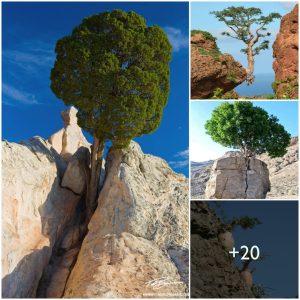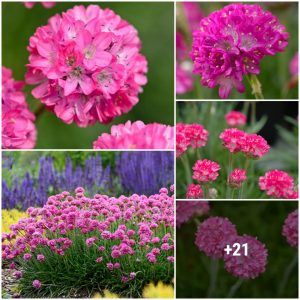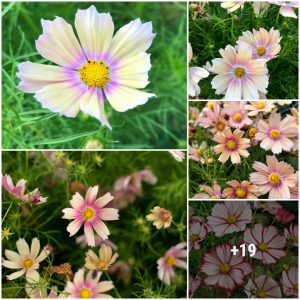Are you tired of constantly tending to your plants and struggling to keep them alive?
Well, fear not, because low-maintenance plants may be just what you need!
Whether you have a busy schedule, limited outdoor space, or simply lack a green thumb, there are plenty of plant options that require minimal care and attention.
In this blog post, we will explore some of the best low-maintenance plant ideas that can add life and beauty to your home or garden with minimal effort.
From succulents to spider plants, these plants are sure to bring some greenery into your life without adding extra stress or work.
Below are FIVE post to all 58 Low-Maintenance Flower Ideas
1. Pinwheel Jasmine

The pinwheel jasmine is a lovely plant that has dark green foliage and white blooms that will look great in any space. They can grow to be between three and five feet tall as well as across. This plant prefers partial shade, which is why it works well in this state.
| Scientific name: | Tabernaemontana divaricata. |
| Plant Type: | Shrub |
| Plant Size: | 3 to 5 feet tall |
| Sun Exposure: | Partial shade |
| Maintenance: | low |
| USDA Plant Zones: | 9-11 |
| Toxic to pets: | Toxic to dogs and cats |
2. Butterfly Iris

If you are looking for a plant that attracts butterflies, then the butterfly iris is going to be an ideal option. This is a plant that does not require a lot of water, and it will grow in full sun to partial shade. This plant will grow to be about two feet tall.
| Scientific name: | Dietes iridioides. |
| Plant Type: | Perennial |
| Plant Size: | 2-4 ft tall and wide |
| Sun Exposure: | Full sun to partial shade |
| Maintenance: | low |
| USDA Plant Zones: | 8-11 |
| Toxic to pets: | Non-Toxic |
3. Indian Hawthorne

As a plant that does well in zones eight through 11, it’s ideal for growing in Florida. It will grow well in full sun as well as afternoon shade. These plants prefer moist soil that’s relatively porous. They are also drought-tolerant plants that can grow to be six feet tall.
| Scientific name: | Rhaphiolepis spp. |
| Plant Type: | Shrub |
| Plant Size: | 3-6 ft tall and wide |
| Sun Exposure: | Full sun to partial shade |
| Maintenance: | low |
| USDA Plant Zones: | 8-11 |
| Toxic to pets: | Toxic to cats and dogs |
4. Areca Palm

A mature areca palm can grow to be up to 30 feet tall. It prefers to grow in slightly acidic soil and indirect sunlight. It produces pale yellow flowers, and it does not need a lot of water to grow. This plant also likes high humidity, so it is a great choice to grow in Florida. If you would like to learn more about growing Areca, see the growing guide I wrote here.
5. Tibouchina (urvilleana)

Also known as the princess flower, this is a tropical plant that produces purple flowers. With full sun, acidic soil, and regular watering, this plant can grow to be 20 feet tall. It can also grow in partial shade and high humidity, which makes it perfect for growing in Florida.
6. Variegated Ginger

This plant does not like to grow in colder climates. It can grow to be 10 feet tall in the right environment, which makes it ideal for Florida. It requires a good amount of water during the growing season; it will also grow in full sun or partial shade.
7. Pentas

This is a plant that is known for its brightly colored blooms and for attracting pollinators. It grows best in full sun and well-drained soil, but overall the plant requires very little to maintain. In fact, it will even bloom during the hottest time of the year in zones 10 and 11.
8. Croton

This is a plant that grows well in rich soil and direct sunlight for a few hours a day. Because of this, a shady location in Florida is going to be ideal, but it will need frequent watering during the growing season. It prefers temperatures above 70 degrees Fahrenheit, and it will do well with a bit of humidity. If you want to learn more about growing Crotons, check out the growing guide that I wrote.
9. Caladium

This plant will thrive in high humidity areas; in fact, humidity and temperatures above 65 degrees Fahrenheit is necessary for it to grow. It will need a lot of light, but not direct sunlight, so growing it in the shade or indoors is recommended, especially during the hot summer months in Florida. Here is a growing guide we wrote about Caladiums.
10. Foxtail Fern

Grown in zones nine to 11, this is a plant that can grow to be two feet in height. It is a drought-tolerant plant that will do well in high heat areas that is very low maintenance. Too much water could cause the plant to have issues with rot and fungus.
11. Jacobinia Pink

This shrub, which can grow to be five feet tall, has white and pink flowers. It likes to grow in tropical areas, which makes Florida, especially southern Florida ideal. It will do well in partial shade, which means that you should plant it where it avoids the scorching afternoon sun.
12. Persian Shield
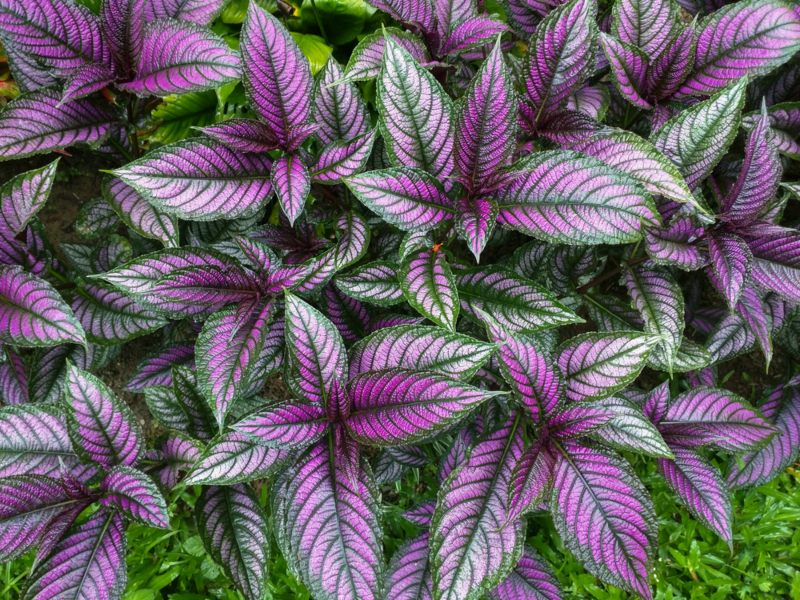
The Persian shield is a plant that likes to grow in high humidity, so it is often only found outdoors in zone 10. It can handle full sun, but it tends to grow the best in partial shade that avoids the afternoon sun. It will require a lot of water to help keep the humidity around the plant up. If you want to learn more about growing Persian Shield, check out the growing guide that I wrote.
13. Bromeliads

Bromeliads are a plant that will grow best in humid, moist conditions. Make sure that the plant has enough drainage, and that it is not getting direct sunlight for the majority of the day. They prefer at least 60% humidity, which is why Florida is ideal for growing them.
14. Saw Palmetto

This is a drought-tolerant plant that will grow in any type of lighting from full sun to full shade. It does well in wet areas of the country because it needs a lot of moisture to grow. It does well in high humidity, like what you find in Florida, as well.
15. Peace lily
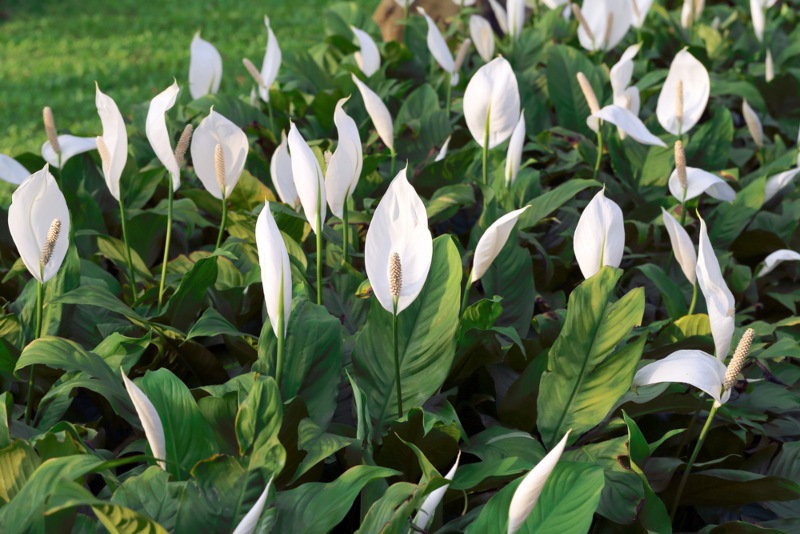
This bright white lily is one example of a lily that is capable of growing in the shade, though they will bloom less in complete shade. Peace lily are drought-tolerant plants, so they will not require a lot of water. In fact, overwatering peace lily can cause the plant to die.
16. Cordyline

Cordyline’s are super easy to grow, they have leathery leaves that look fantastic all summer long. You can find Cordyline in red and pink. They are drought-tolerant, but don’t let them dry out too much. Grow them in well-drained soil in light shade or full sun.
17. Peperomia

Peperomia plants are often called radiator plants or rubber plants. They can be grown inside as a houseplant or out in the garden. They can provide beautiful green foliage. Peperomia plants are a perfect Florida shade plant as they thrive in full shade. If you would like more information on this plant, see the guide I wrote about growing Peperomia here.
18. Alocasia Odora

Alocasia Odora often called elephant ears for their dramatic green foliage. They grow to be around 4-8 feet tall. Plant them in your shade garden. They thrive in moist to wet soil.
19. Aztec Grass

The Aztec grass plant looks similar to a Spider plant. Aztec grass can grow to be 12″ to 18″ tall. In Florida, it can thrive in part shade. Aztec grass looks stunning when planted along a path or walkway.
20. Firespike
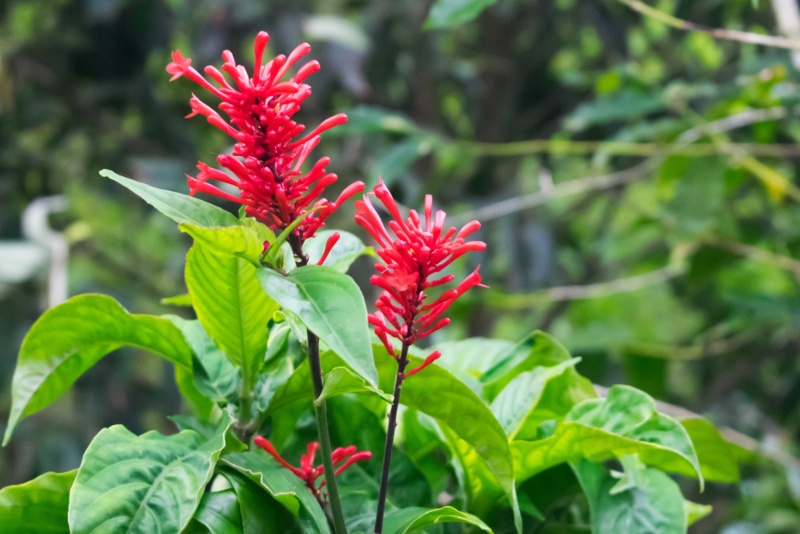
Firespike grows to be 4 to 6 feet tall. They grow beautiful red tubular flowers. Firespike can grow in shade in Florida year-round, but for maximum blooms, you may want to plant these in full Sun. Firespike is drought-tolerant.
21. Cat Palm

A Cat palm is very similar to an Areca Palm. Planting them in the shade is best, which will require less watering. This palm grow to be 6-8 feet tall.
22. Dwarf Azalea

Dwarf Azalea can bloom at different times throughout the year. It’s a small shrub that can grow in shade. When planting Azalea make sure your soil has the proper PH level (preferably a pH of 5.5 or less).
23. Chenille Plant

The Chenille Plant can be grown outdoors in the garden or in a container. In Florida, it blooms on and off all year. This plant prefers part sun to part shade.
24. Heliconia Plant

This exotic plant looks amazing in Florida gardens. They blossom in the Spring, Summer, and Fall. They thrive in zone 10b as these plants prefer warm weather.
25. Oyster Plant

The oyster plant is an excellent choice for a groundcover. They have beautiful green leaves and the back of the leaves are purple. The oyster plant can thrive in different light conditions but does best in part shade to partial sun.
26. Wild Coffee (Psychotria nervosa)

Wild Coffee (Psychotria nervosa) is a plant species native to the southeastern United States, particularly Florida. It is a small, evergreen shrub that typically grows up to 6 feet tall, with glossy, dark green leaves. Wild Coffee is well adapted to growing in shady environments, and it is commonly found in forest under-stories or along shaded edges.
27. Coontie (Zamia integrifolia)
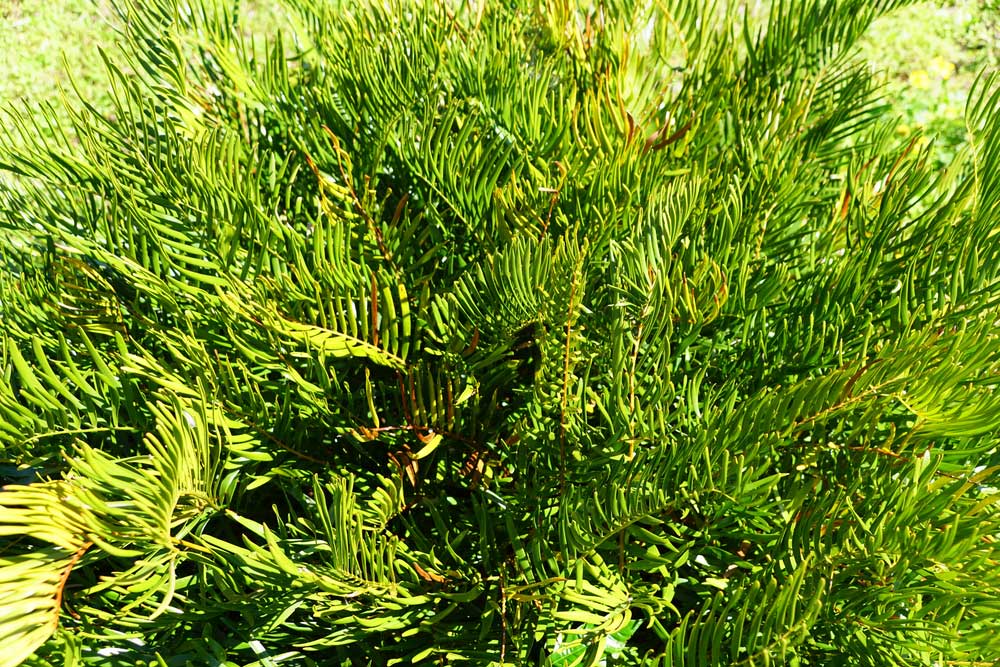
Coontie (Zamia integrifolia) is a slow-growing, perennial plant species native to Florida and other southeastern coastal areas of the United States. It is a small, shrubby plant that typically grows up to 3 feet tall and has a bushy appearance. Coontie has dark green, glossy leaves that are arranged in a spiral pattern around a central stem. The plant produces cylindrical cones that contain small, orange-red seeds that are highly toxic if ingested. Its a low-maintenance shrub that is not shade tolerant.
Lily of the Valley

Lily of the valley is a perennial flower that grows well in USDA plant hardiness zones 2-9. It grows to between 12-22 inches tall and has slender stems and elliptical leaves. When in bloom, white or pink bell-shaped flowers cover the stems.
The blooms are quite fragrant, so they’re great for bringing pollinators to your garden early in the season. Lily of the valley grows well in moist, fertile, and well-drained soil. It’ll thrive in partial shade, so plant it underneath shrubs or trees.
If exposed to the full sun a lot, keep the soil moisturized. Late fall is the best time to plant lily of the valley to bloom in early spring.
Snowdrops

Snowdrops bloom drooping bell-shaped flowers at the end of stems that can be 4-8 inches tall. The flowers are bright white, with spots of bright green in the inner petals.
Since snowdrops do well in cold weather, they’re perfect for growing in USDA hardiness zones 3-8. Planting them in the shade also creates the best conditions for their growth. The soil should be adequately moist, well-drained, and fertile.
With the right conditions, you’ll have an easy time growing snowdrops since most garden pests do not prefer them.
Cyclamen Coum

Also known as the Eastern Snowbread, Cyclamen coum has pink bell-shaped flowers and rounded heart-shaped leaves. It sticks close to the ground, growing to a height of between 2 and 4 inches.
Cyclamen coum is a perennial plant that’s hardy in zones 5-8. In its natural habitat, it grows well in woodlands and rocky areas. Therefore, it’s important to plant it beneath shrubs or trees that provide adequate shade.
Plant your tubers in early fall so they’ll have enough time to grow and bloom in early spring. Place the tubers one inch deep and with a spacing of about six inches.
Pansies

Pansies can reach 9 inches tall and bloom brightly colored flowers with overlapping petals. These petals have dark-colored splotches that appear like smiling faces. Pansies can spread to a width of up to 12 inches, so it’s important to space them.
They’ll do well in USDA hardiness zones 4-8, with acidic soils of pH between 5.4 and 5.8.
These plants need the sun, but too much will dry them out. Therefore, plant them somewhere they can soak in the morning sun but avoid the full afternoon sun. If you can’t find a good shady spot that allows this exposure, portable containers are your best bet.
Plant your pansies in the fall and water regularly throughout the growing stage. Pansies bloom for a long time, and their flowers will grace your garden all spring. Just ensure to remove the dead flowers to boost the production of fresh blooms.
Daffodils

Certain varieties of daffodils are the perfect early spring plant—you don’t even have to wait for spring because they can bloom in late winter. Such varieties include February gold, Rip van Winkle, ice follies, and early bride.
Daffodils do well in USDA hardiness zones 3-8, are very tolerant to cold and thrive under full sun. Avoid shady spots since this can keep them from flowering. The soil should be rich in organic matter and drain well. Plant daffodils in the fall, burying the bulbs about 4 inches deep.
They look great in groups or scattered naturally in the grass. But, don’t overcrowd them as this too will hinder flowering.
Single Early Tulip

The single early tulip has a strong stem that can grow 10-18 inches tall, with a single bell-shaped flower blooming at its end. Flowers can be yellow, pink, white, orange, and a range of other bright colors.
It is best to plant single early tulips during fall, about six weeks before the ground freezes. You’ll need to choose a location where they can enjoy the full afternoon sun. Water the bulb right after planting to activate rooting.
Crocus

Crocuses have grass-like leaves and goblet-shaped flowers blooming at the end of a narrow tube. The flowers come in shades of yellow, red, orange, pink, and more. A crocus can grow between 2-4 inches tall and is suitable for USDA hardiness zones 3-8.
The best time to plant crocuses is in fall when the soil temperature is below 60 Fahrenheit degrees and before the ground freezes.
Bury the crocus corm 3-4 inches deep in well-drained soil. The soil should stay moist but not soggy, as this can make the corm rot and prevent growth. Cover the site with mulch throughout winter and only remove it in late February for the shoots to appear.
Claytonia Spring Beauty

The Claytonia spring beauty is native to the Midwest and grows well in USDA hardiness zones 6-9. Its star-shaped flowers come in pink or white, with the petals having dark pink veins.
Plant the spring beauty during fall in well-drained soil and keep it moist. Claytonia grows naturally in the woodlands, so a forested patch of your garden will be a great site. If the plants have frequent exposure to full sun, water them regularly to keep the soil from drying.
Hellebore

Also known as the hybrid lenten rose, hellebore is a plant that grows well in USDA hardiness zones 4-9. Growing up to 24 inches tall, it has upright stems and saucer-shaped flowers.
Hellebore needs shade to grow and bloom well, plus rich soil with good drainage. You’ll need to water it often during its growth stage.
For hellebores to flower in early spring, plant them in late fall, about five weeks before the first hard frost hits the ground. This gives the roots enough time to develop well before the cold temperatures come around.
Primrose

Primroses grow to a height of up to 12 inches and have flowers that bloom in a rainbow of colors, including white, yellow, and blue. These perennial herbs are suitable for USDA hardiness zones 4-8.
Plant your primrose seeds in early autumn when the soil is still warm. This gives them a head start before winter when primroses usually become dormant. The soil should be slightly acidic and moist. To boost growth, enrich them with leaf mold and compost.
During spring, your primroses should be in the sun, while a bit of shade is necessary during summer.


